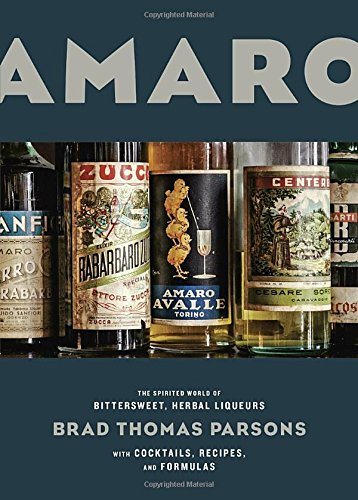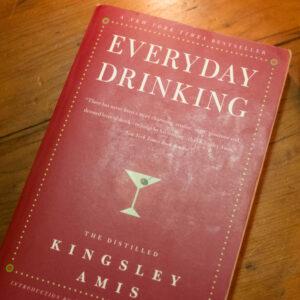Welcome to the Boozy Bookshelf, in which drinks writer (and the writer of Drinks) Adam McDowell profiles an essential read for people with a keen or professional interest in adult beverages.
Anyone who works around drinks for a living gets asked all the time: What are bitters? Many of us will have been grateful for the appearance of Brad Thomas Parsons’ 2011 book Bitters: A Spirited History of a Classic Cure-All, if only because you could toss it at your non-booze geek friends so you didn’t have to do the hard work of enlightening them.
Bitters turned out to be a terrific volume for specialists as well, in large part thanks to Parsons’ affable, conversational writing style. The recognition for the book included a James Beard Award.
Parsons is once again tinkling on the black keys of the human palate with Amaro: The Spirited World of Bittersweet, Herbal Liqueurs, new this fall from Ten Speed Press. This time he focuses on the Italian contribution to bitter booze — namely amaro, a category he defines more broadly than the Italians themselves, but more about that in a minute.
Reliable background information on amaro producers and production tends to be difficult to come by. The Italian way is to market with mystique. You can tell Parsons did his best to pull what he could out of them, which gets the book off to a sweet start overall.
As for what counts as an amaro? Well now. Contrary to Italian practice of finishing a meal with something bitter, I’m going to get the somewhat tart part of this post out of the way early. Parsons gets needlessly hung up on the taxological question of whether the large category of bitter-tasting orange- and red-coloured liquors that Italians consume before a meal but seldom after — in other words, Campari, Aperol and lesser-known rivals — count as amari. Parsons reports that “every Italian insists” these are “not the same as amaro.” Italians call them “bitters,” using the English word. And Parsons admits that pushing these bitters onto the same shelf as amari, regardless of what the Italians say, is probably a uniquely American practice (he’s probably right: I come from just over the border in Canada, and I had never heard of anyone referring to Campari as an amaro before encountering it in this book). Rather than simply widen the scope of the book, Parsons overrules the Italians regarding what counts as an amaro. Into the category they go. Call it American exceptionalism.
.jpg)
(Meanwhile, Parsons also fusses about whether a fernet is an amaro. He says yes again, though I think he’s on much less controversial ground there.)
Also quite American is the book’s focus on “modern amaro cocktails.” This section, which takes up roughly 40% of the pages, collects dozens of contemporary recipes from across the United States — an American-focused approach to European spirits that will be familiar from Talia Baiocchi and Leslie Pariseau’s Spritz, released last year. While more internationalist readers might have appreciated a deeper focus on the original Italian story and context regarding amari — and correspondingly less of a jaunt around America’s bars — there are some tempting recipes in here, enough to banish all but a trace of such misgivings.
Take the “alpine slide,” by Dave Arnold of New York’s Booker and Dax, which marries Amaro Braùlio with Byrrh, Dolin Blanc and Champagne acid to create a midnight foil to the Aperol spritz’s sunny sunset. The “hunting vest,” by Portland’s Evan Zimmerman, uses cedar-infused Campari as the backbone of a Northwestern-style negroni. And the “ice-berg,” brainchild of Garret Richard of Brooklyn, seems like too much fun not to try: It’s a slushy drink incorporating tequila, Underberg bitters and orgeat. Bartenders, professional and otherwise, will find plenty of inspiration here.
More fun suggestions follow, including a quartet of DIY amaro recipes — one for each of the seasons. There are little nips of info about small, non-Italian distillers trying their hands with products that pay homage to the original. These helpful nudges will surely encourage people in the English-speaking realms to give amaro a permanent place in these new homes. Parsons has taken a solid amount of research from Italy itself, combined it with a thorough exploration of what’s going on in America, and given a spirit that’s meant to conclude a meal an excellent shot at a new beginning.








